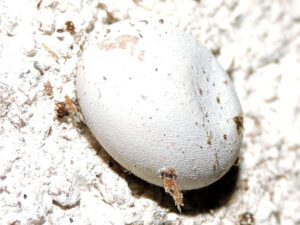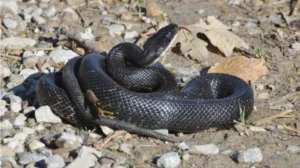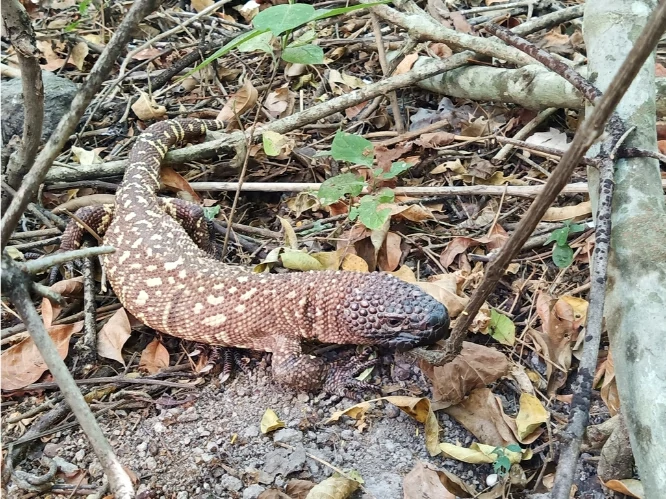If you’ve ever seen a lizard dash across a wall or sun itself on a rock, you might’ve wondered what kind of animal it really is. It’s scaly, cold-blooded, and sometimes hangs out near water.
So is it a reptile or an amphibian? They seem kind of similar at first, right? But when you look closer, you’ll see they’re very different.
Lizards are reptiles, not amphibians. They have dry, scaly skin, lay eggs with tough, leathery shells, and breathe through their lungs their whole lives. Amphibians usually start out in water, have soft, moist skin, and breathe through both lungs and skin as adults.
Lizards might seem a bit like amphibians because both are cold-blooded and like warm, humid spots.
But once you notice their skin, eggs, and how they breathe, the differences are clear.
What Makes Lizards True Reptiles
Lizards are part of a group called Reptilia, which also includes snakes, turtles, tortoises, and crocodiles. One of the easiest ways to tell a reptile is by its skin. Reptiles have scales made of keratin, the same tough stuff in your fingernails.

That scaly skin keeps them from drying out, even in hot, sunny places. That’s why you’ll often see lizards sunning themselves; they handle dry heat better than most animals.
Amphibians have soft, moist skin that needs to stay wet to breathe. If their skin dries out, they can’t get enough oxygen.
So, if you gently pick up a lizard and it feels dry and rough, that’s a clear clue. It’s a reptile, not an amphibian.
Lizards Don’t Need Water to Breathe
Another big difference is how they breathe. Lizards use lungs their whole lives, just like we do. Amphibians start out breathing through gills as babies, then switch to lungs and sometimes their skin as adults.

A gecko, for example, only breathes through its lungs. Same with an iguana or a monitor lizard. But a frog can take in oxygen through its skin, even underwater.
That’s why amphibians stick near ponds, streams, and swamps. They need moisture for their skin. Lizards can live in dry deserts or on sunny rocks far from water.
The Way They Lay Eggs Is Very Different
Both reptiles and amphibians lay eggs, but they do it differently.
Lizards lay eggs with tough, leathery shells that can survive in dry places. The shell keeps the baby inside from drying out, so they don’t need water.

You’ll often find lizard eggs hidden under leaves, buried in soil, or tucked into small cracks.
Amphibians lay soft, jelly-like eggs that have to stay in water or damp spots. If they dry out, the babies won’t survive. That’s why frogs, toads, and salamanders always go to ponds to lay eggs.

For example, a green anole might lay its eggs under a log in a garden, while a frog lays its eggs in a puddle. Both are cold-blooded, but only lizard eggs can handle dry air.
Lizards Have Scales, Not Slimy Skin
One of the easiest ways to tell them apart is how they feel. Amphibians often look shiny or slimy because their skin is wet and covered in mucus to stay hydrated.
Lizards have scales that act like armor. The scales protect them and hold in moisture, even in dry places.
That’s why a desert lizard like a bearded dragon can live where no amphibian could survive.
If you’ve ever tried to catch a house gecko gently, you’ll notice its skin feels smooth but not slimy. That dry skin is a clear sign it’s a reptile.
Amphibians Go Through Metamorphosis, Lizards Don’t
Here’s another big difference: amphibians go through metamorphosis, lizards don’t.
A frog starts life as a tadpole, breathing through gills and swimming with a tail. Over time, it grows legs, loses its tail, and develops lungs so it can live on land. That’s a complete change.

Lizards hatch looking like tiny adults. They breathe with lungs, walk on land, and eat small insects; basically the same as their parents, just smaller.
So, if you see a little lizard scurrying on the ground, it’s not a “larva” or a stage in between. It’s just a mini version of the adult reptile it will grow into.
Where Lizards Live Compared to Amphibians
Lizards can live in deserts, forests, grasslands, and even cities. As long as they can find warmth, food, and shelter, they’re happy.
You’ll see anoles on fences and walls, skinks hiding under rocks, and geckos crawling across ceilings at night. They don’t need to stay near water because their bodies don’t rely on it like amphibians’ do.

Amphibians usually stay close to water or damp soil. Frogs, toads, and salamanders need moisture to keep their skin from drying out, so they rarely wander far.
If you spot a small animal near a pond with soft skin and webbed feet, it’s probably an amphibian. But if it’s scaly, dry, and sunbathing on a rock? That’s a lizard, which makes it a reptile.
Cold-Blooded but in Different Ways
Both lizards and amphibians are cold-blooded, which means they rely on their surroundings to control body temperature. But reptiles are good at using the sun to warm up.
You’ll often see them sunning on rocks or windowsills in the morning. When they get too warm, they move into the shade or burrow underground.
Amphibians can’t handle the same dryness or heat. Their thin skin makes them very sensitive to drying out, so they stay in cooler, wetter areas.
Basically, both are cold-blooded, but lizards are built for heat while amphibians are built for wet places.
Lizards Share a Closer Link With Snakes
If you want to know what lizards are related to, think snakes, not frogs. Lizards and snakes both belong to the reptile group Squamata, so they share a common ancestor.

Some lizards, like legless lizards, look a lot like snakes. The difference is that most legless lizards still have small ear openings and eyelids, while snakes don’t.
Amphibians, like frogs and salamanders, come from a completely different path. They’re more closely related to fish than to reptiles.
So even if a lizard and a frog hang out in the same garden, they come from very different branches of the animal family tree.
A Few Tricky Exceptions
Nature likes to mix things up, so a few animals might confuse you.
Take newts, for example. They live on land part of the time and in water the rest. They have moist skin like other amphibians, so they’re definitely not reptiles. Even though people sometimes mistake them for small lizards.

Monitor lizards, like Komodo dragons, can swim and hang out near water, but they’re still reptiles.
They breathe with lungs, have scales, and lay eggs with leathery shells.
Even if some reptiles live near water, it doesn’t make them amphibians. Their skin, eggs, and breathing tell the real story.
Why People Get Them Mixed Up
It’s easy to see why people confuse lizards and amphibians. Both are small, cold-blooded, and often found in the same places. A frog on a wall and a gecko on the same wall don’t look very different at first.
But once you notice the details (the dry scales, the lungs, the egg types)you’ll never mix them up again.
Lizards are much tougher on dry land, while amphibians stick to water most of the time.
Think of lizards as sun-lovers and amphibians as water-lovers. Both are amazing, but they live by very different rules.
Conclusion
So, are lizards reptiles or amphibians? They’re definitely reptiles. They have dry, scaly skin, breathe through lungs their whole lives, and lay eggs that can survive outside water.
Amphibians have soft, moist skin, need water to breed, and often spend half their lives in water.
Lizards are built for dry, sunny places. Whether it’s a house gecko on your wall or a big iguana in a tropical forest, they all share the same reptile traits.
Once you spot those scales and sun-loving behavior, you’ll know right away, you’re looking at a reptile, not an amphibian.
Hi, my name is Ezra Mushala, i have been interested animals all my life. I am the main author and editor here at snakeinformer.com.

